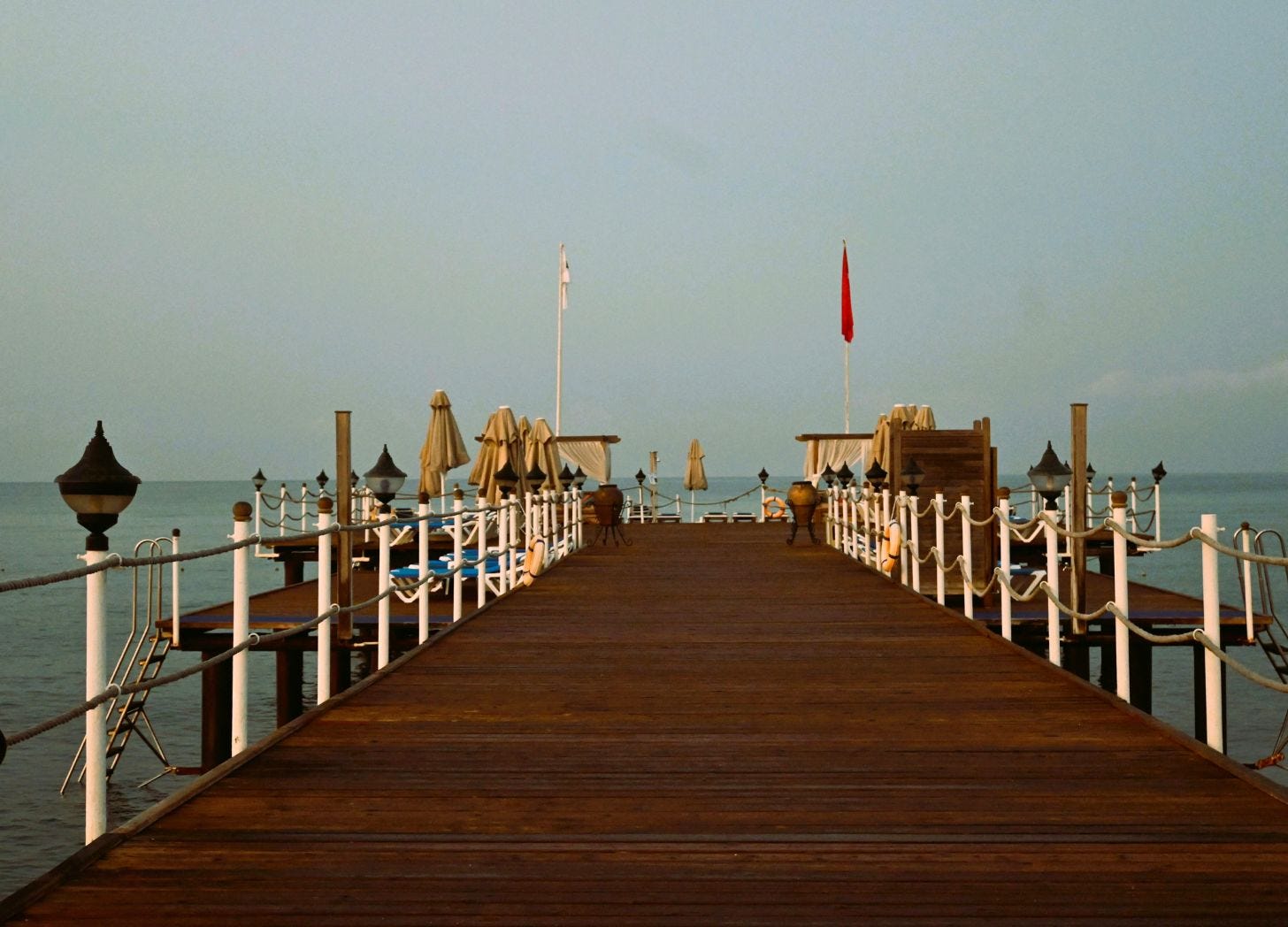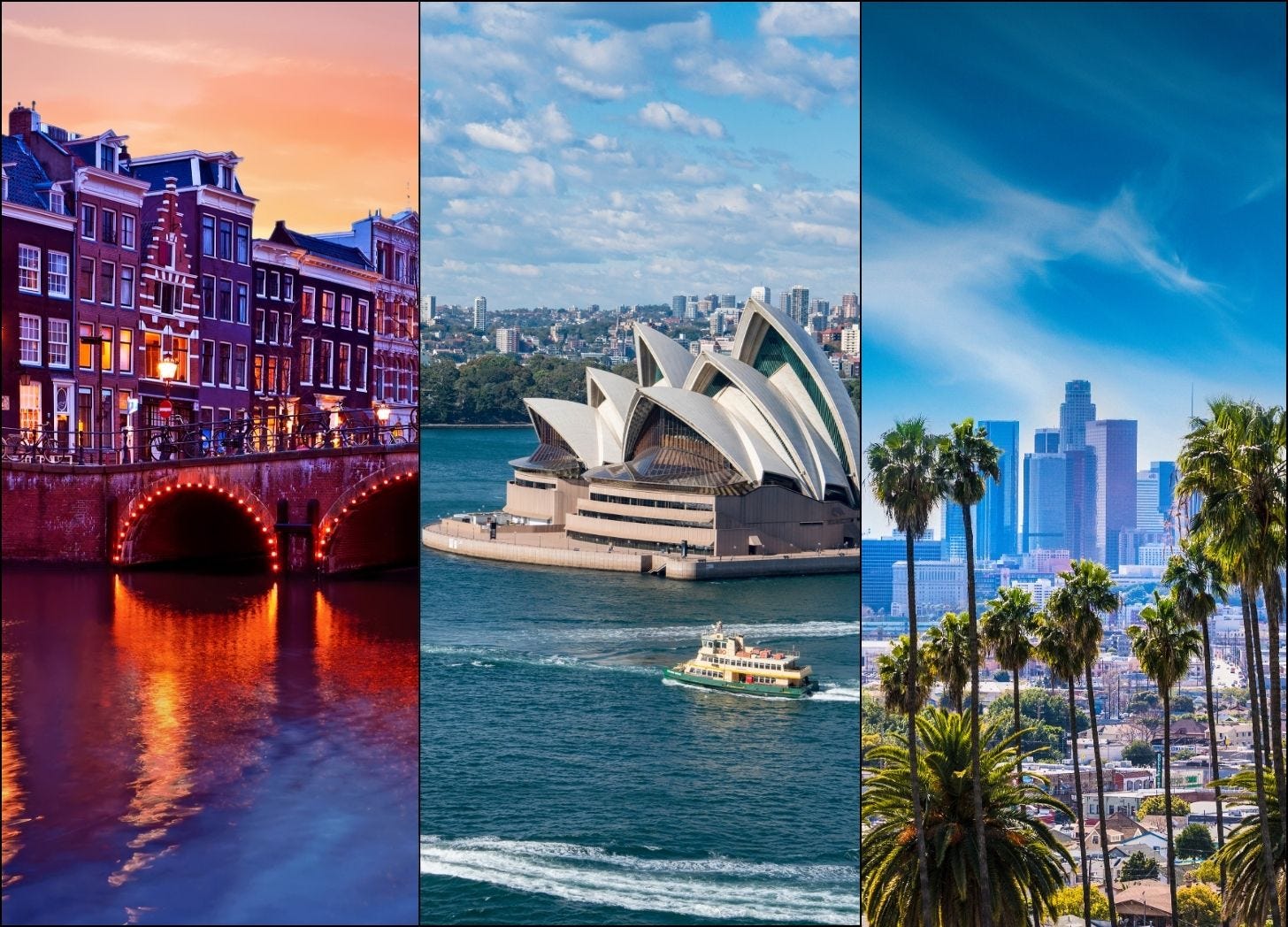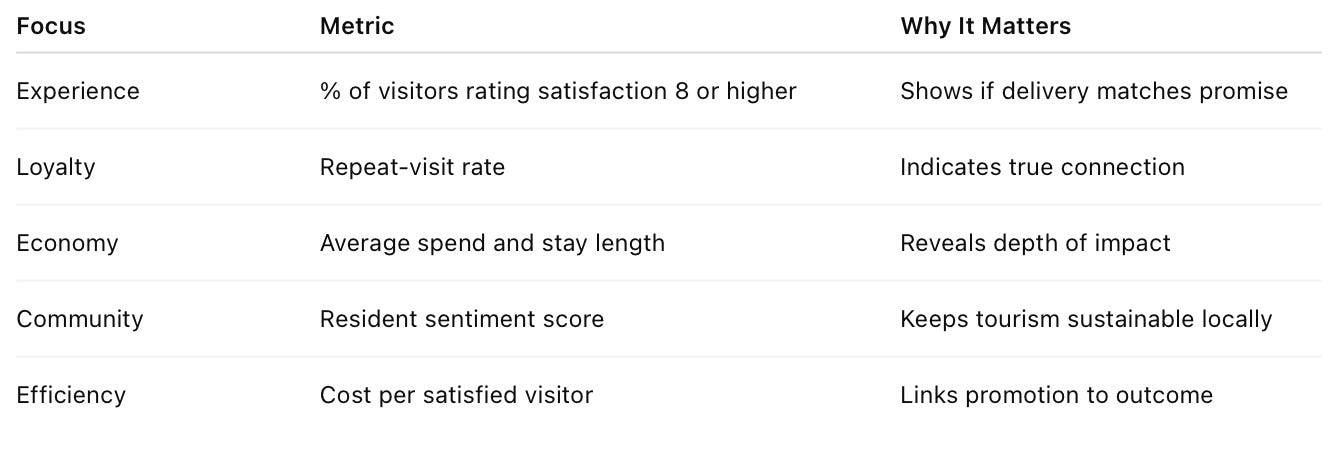Destination Sunday: Can Great Marketing Fix a Bad Experience?
Everyone blames marketing.
Few fix the real problem.
A destination doesn’t fail because people don’t know about it. It fails because once people arrive, they don’t want to come back.
The same holds true for hotels, inns, and vacation rentals. When guests leave disappointed, no campaign can undo a weak experience.
When “More Marketing” Isn’t the Answer
When bookings slip, the reflex is simple: launch another campaign. Bigger ads, better slogans, fresh visuals.
But that is like adding fuel to a car with a broken engine. It makes more noise, not more movement.
Marketing is an amplifier. It magnifies what already exists. If infrastructure is neglected or the experience falls short, marketing only spreads the problem faster.
For properties, the same pattern applies. A listing may promise calm luxury, but if guests encounter poor lighting, slow response, or inconsistencies, that ad spend only accelerates negative reviews.
Clarifying Management vs. Marketing
Destination management and destination marketing are often confused.
Management is about systems, planning, infrastructure, policy, and the on-ground experience.
Marketing is the communication and outreach component. Marketing amplifies what management builds. According to WTM Hub and Mize.tech, strong management must come first. Otherwise, marketing becomes noise.
Whichever one you picked, it’s proof the best marketing starts with management.
What Really Builds Destination Strength
Perception follows performance. Reputation is earned through experience, not slogans.
1. The Experience Itself
Is the visit worth repeating? Did guests get what was promised? If not, marketing speeds up dissatisfaction.
2. Operations and Management
Strong operations come from reliable systems.
Digital maintenance trackers catch issues before guests complain.
Certifications like Green Key and EarthCheck standardize environmental practice.
Service protocols give every visitor a predictable experience.
Studies show destinations with structured operations score 15 to 20 percent higher satisfaction (UNWTO framework).
3. Word of Mouth
Guests trust one another more than any slogan. Authentic stories from satisfied visitors carry weight no campaign can match.
4. Local Involvement
A destination is a shared effort. When locals are part of the experience, authenticity grows.
Programs like resident ambassador networks, community festivals, and local maker showcases have measurably raised visitor sentiment in European cities. These efforts knit residents into the narrative and create pride, not resistance.
What the Research Shows
Global evidence reinforces the same lesson:
Destinations investing in infrastructure and management show stronger, longer growth than those relying primarily on campaigns (WTM Hub; ScienceDirect 2024 consensus).
Tourism Australia spent heavily on campaigns but saw arrival declines when service quality lagged. (ICMR India case study)
U.S. Travel Association documents regions that tempered marketing cuts by bolstering visitor experience infrastructure rebounding more quickly. (POTP Case Studies PDF)
The City of Amsterdam’s 2023 Visitor Economy Report documented a 14 percent rise in resident satisfaction after refocusing budget to community and operations.
The Los Angeles Tourism and Convention Board’s 2024 Visitor Experience Study reported a 9 percent improvement in perceived neighborhood safety after upgrades to mobility, signage, and public access.
These examples underscore that community design and operational systems matter as much as marketing reach. Development endures. Promotion fades.
Here’s the Math
Ask what truly delivers return.
A $50,000 ad campaign might generate 10K clicks and 200 first-time bookings.
The same $50K spent on trail access, staff training, or check-in systems could boost satisfaction by 20% and repeat visits by 10%.
Repeat guests cost less to acquire and stay longer. That is compounding value.
For hotels and rentals, focused investments, such as luxury linens, meaningful guest touches, and streamlined communication. Often outperform a single marketing push.
A Simple Test for Every Destination
Would I come back?
Would I tell a friend?
Would I invest my own money here?
If any answer is no, marketing won’t fix the issue.
At the property level, ask the same three about your guest experience. A strong product makes marketing easy; a weak one makes it expensive.
Four Practical Moves for Leaders
1. Fix the Foundation
Audit the journey. Locate friction—parking, communication gaps, signage, check-in. Pick five affordable fixes and complete them this quarter.
2. Build the Experience
Pilot one signature experience—a guided walk, local dinner, or maker tour. Test it with locals, refine, then promote.
3. Involve the Community
Host a short roundtable with residents and businesses. Ask, “What should visitors feel?” and “How do we show that?”
4. Tell the Truth Well
Once the improvements exist, refresh marketing with real images and guest stories. Authenticity outlasts hype.
For operators: same rhythm. Fix what guests note, add one standout moment, collect feedback, then update listings to reflect reality.
Real Property-Level Case Studies
The same management-first pattern shows up in real properties too:
Hotelatelier (Europe, 42 properties)
Deployed ReviewPro and daily team workflows to act on real feedback. They report improved satisfaction and reputation impact. (HospitalityNet case study)Petit Palace Hotels (Spain)
They increased direct-collected reviews via TrustYou. These reviews scored 4–7 percent higher than other sources, lifting visibility and ratings. (TrustYou case study)Centara Hotels & Resorts (Thailand)
Focused operational refinements—arrival, breakfast, sustainability—and improved review index ratings, especially in local languages. (Shiji / Centara case)Coast Hotels (North America)
Adopted Green Key sustainability practices, standardized guest feedback across properties to benchmark and drive improvement. (Green Key / Coast Hotels report)Vacation rental case (U.S.)
A cabin host improved first impressions by sending a detailed welcome guide ahead of check-in, reducing guest confusion and friction. The result: more five-star reviews and direct bookings. (Expedia Group Partners case)
Each of these is different in size and setting, but they all adopted stronger operations and feedback systems before scaling marketing.
How AI Can Help You See the Gaps
Before your next campaign, use AI to uncover what guests actually experience.
Collect reviews, survey text, or messages, then ask AI to detect recurring themes.
Prompt to try:
Act as a destination manager. Review these guest reviews and identify the top five recurring issues in experience, infrastructure, or community engagement. Suggest three improvements to act on before investing in marketing.
Platforms like ChatGPT, Claude, or Perplexity analyze context; tools like ReviewPro or TrustYou visualize sentiment across thousands of reviews.
You can automate weekly reports or staff dashboards that flag frequent phrases—“check-in,” “wifi,” “cleanliness.” Use them in short morning huddles. Over time, teams act faster and smarter. AI is not a replacement—it is a mirror.
Track What Actually Matters
Marketing reach is noise. Retention is health.
Measure what reflects real performance:
Use Net Promoter Score (NPS) to measure advocacy.
Use UNWTO Sustainable Tourism Indicators to track social and environmental balance.
For properties, monitor direct-to-OTA ratio to detect strength of brand loyalty.
Visitor Segments Matter
Good management adapts to who’s arriving.
Families, eco-tourists, digital nomads? They all want different things.
Use booking data, analytics, or AI review tagging to see which segments grow.
For example, if digital nomads stay, improve workspace amenities; if families grow, focus on safety, child-friendly options, or local paths. Listen, adapt, then market accordingly.
Marketing’s Rightful Place
Marketing still matters.
Once the foundation is healthy, campaigns amplify progress. Storytelling, partnerships, and consistent outreach turn management gains into momentum.
Marketing does not fix the problem; it spreads the solution.
Have you ever seen a campaign flop because the guest experience didn’t live up to the promise? Share what happened, or what you learned, in the comments. The best replies may appear in next week’s issue.
Lastly,
Marketing brings attention.
Management earns loyalty.
Community builds legacy.
When destinations and operators combine discipline, empathy, and technology, growth becomes sustainable.
Smart destinations use data and AI to listen faster, act smarter, and build deeper connections.
That is where hospitality’s future lives.






